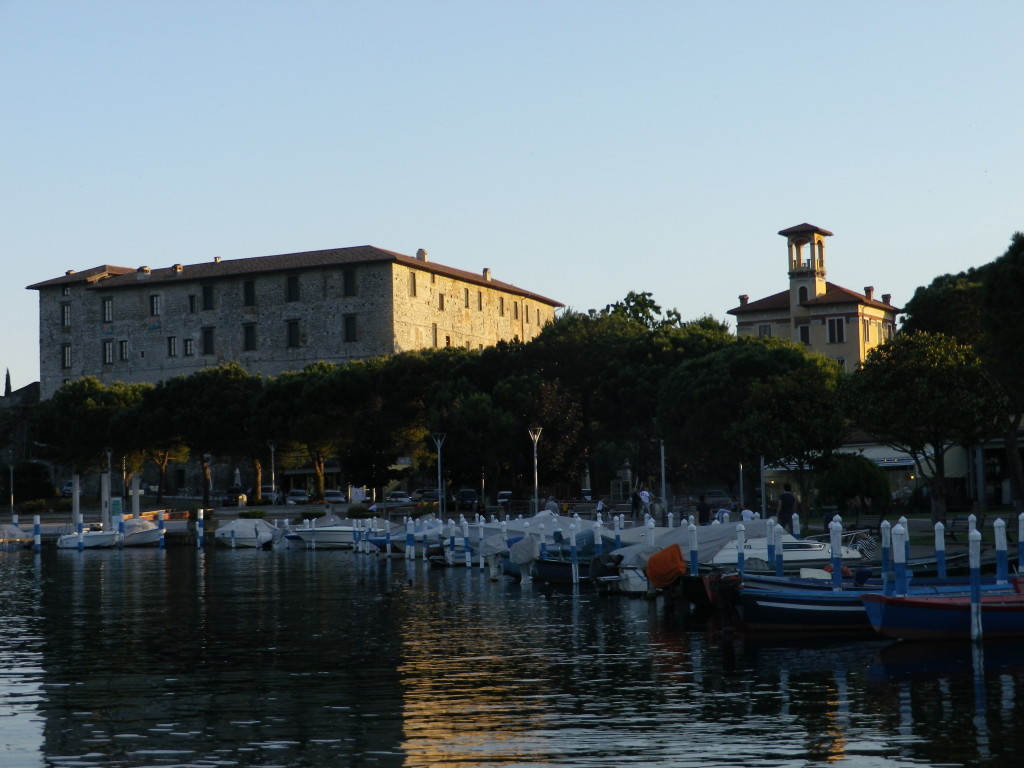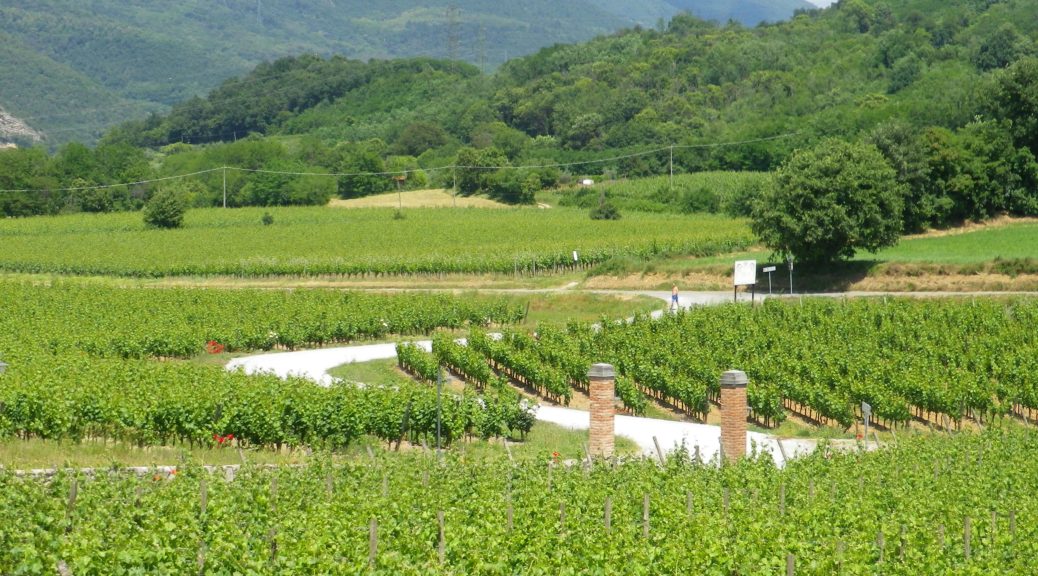Italy has a lot of wines, and a lot wine regions. In addition to still wines, Italy has several versions of sparkling wine. Prosecco and Asti Spumante are perhaps the best known. The region of Franciacorta, a relative newcomer to Italian sparkling wine production, seems to outshine them all though, not only in quality sparkling wine production, but also in wine tourism.
Franciacorta is an ideal location for a wine-themed biking vacation. The lake of Iseo, in addition to being a beautiful, scenic backdrop, helps to moderate temperature; the hills shelter you and the vines from excessive wind; wine production, an old tradition here, resulted in small, established wine villages, linked by country backroads. Best of all, it is quiet and laid-back: I encountered almost as many people cycling as driving on some of these backroads. With this in mind, the regional tourism board has created some well-thought out, marvelously scenic, wine-themed routes. Each of the numbered five routes was color-coded and cleverly named after one of Franciacorta’s famed sparkling wine products. (See the trail Nutshells: Green Trail and YellowTrail.)
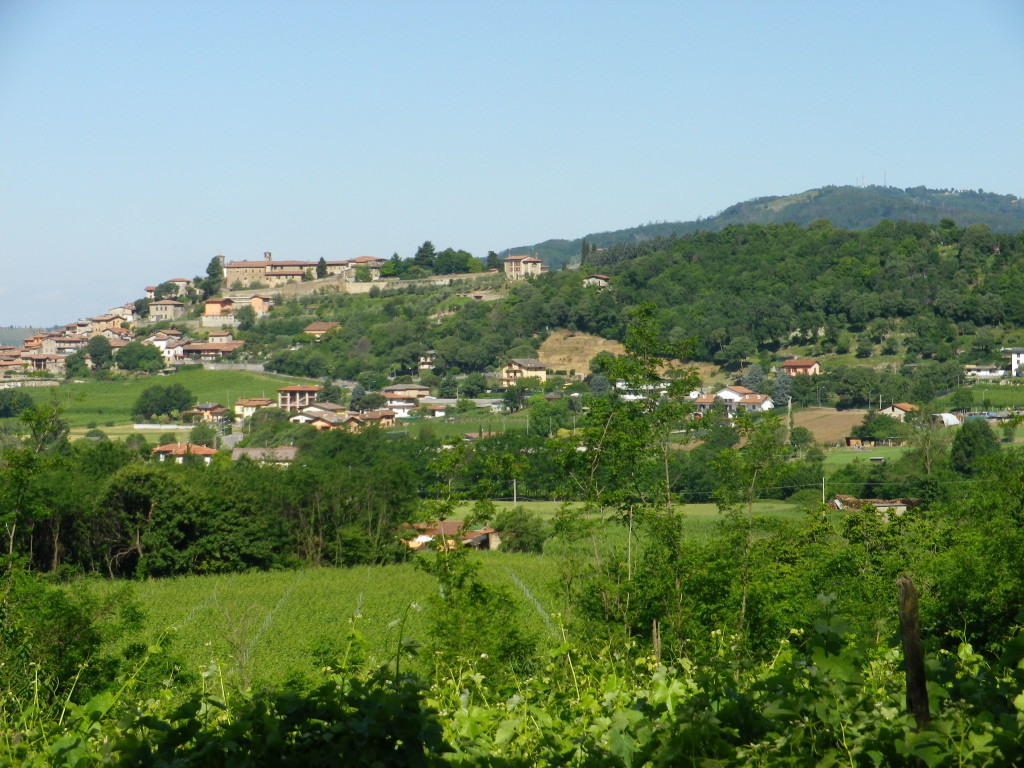
The routes, the wine, and the outstanding food resulted in the perfect mini-vacation. Since I had enjoyed my first trip to Franciacorta so much, I headed back for a second.
Beginning just outside the lakeside village of Clusane, I followed the Saten/Yellow trail to Colombaro. From there to Nigoline, other cyclists joined in, summoned by the pealing church bells. I first visited this charming little village while cycling the Green Route last year. Its beautiful village center has old buildings of stone, strung tightly together, low roofs not impeding the vista of green hills behind it.
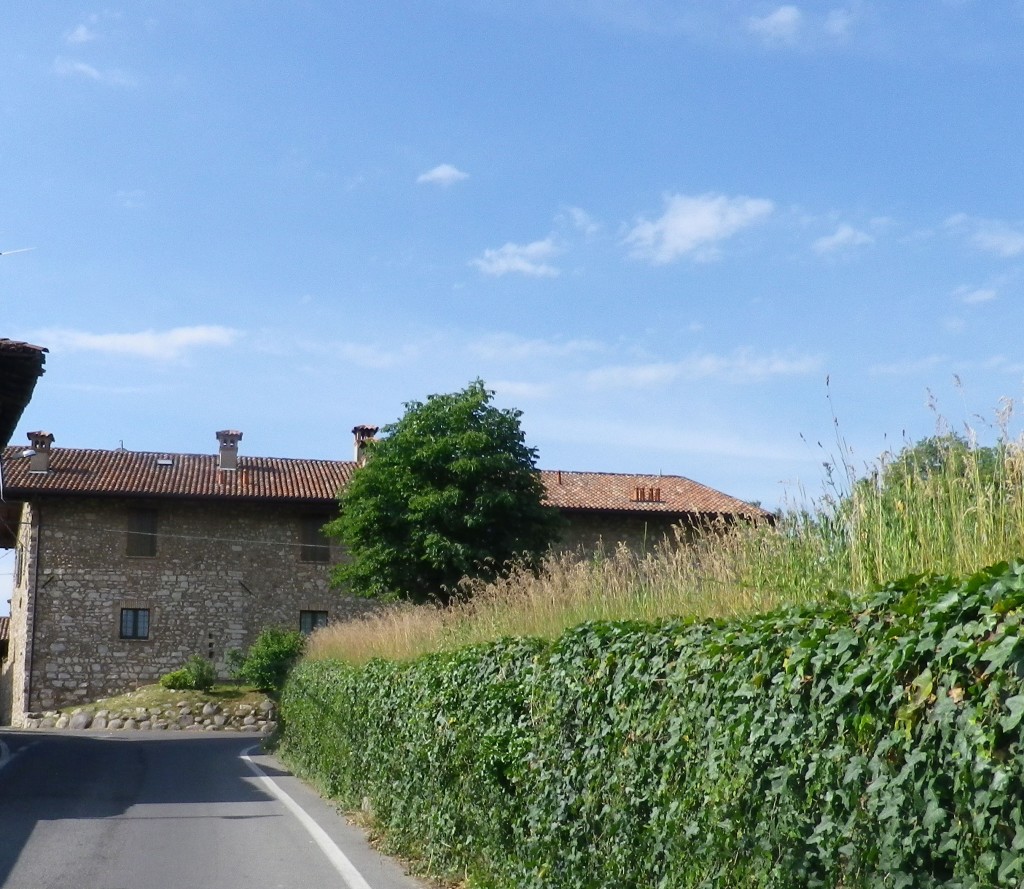
Once outside the village, the vineyards began in earnest. On the uphill approach to the Bellavista winery, the scenery took on an almost classic Tuscan look: Narrow winding roads, vineyards, and copses punctuated by the occasional cypress groupings. Stylish villas with well-tended gardens, appeared: singly, if large and established, or in small clusters if newer. Peaceful and serene – being Franciacorta, there weren’t the crowds found this time of year in Tuscany.
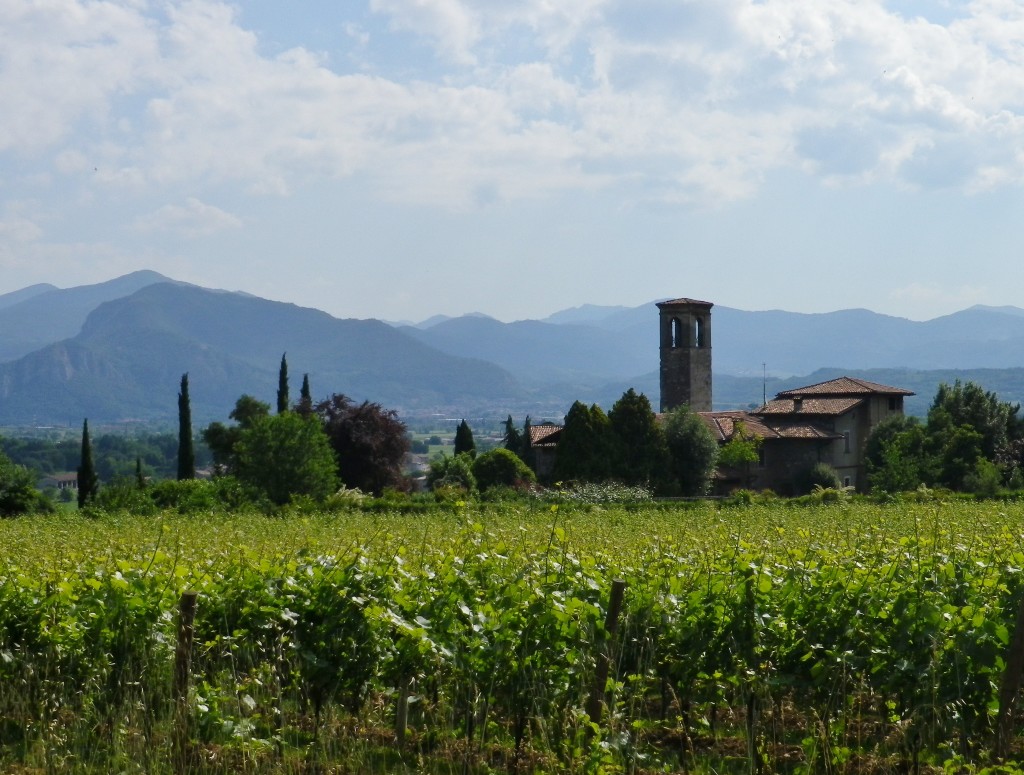
On the edge of Torbiato, another long segment of cycle path appears, ultimately heading past the Ca del Bosco winery. (Its beautiful grounds with magnificent views are worth a detour – even an uphill one.) This part of the ride, passing through vineyards and quite removed from traffic, is delightful. Coming back onto road outside Erbusco, the trail passes the Cantine di Franciacorta, the regional shopping outlet offering a variety of Franciacorta wines and products for sale. (On weekends, when most wineries close, this is where to taste and to buy different local wines.) A small tour bus parked in front indicated it is becoming a popular spot for wine-buying week-end visitors to the region.
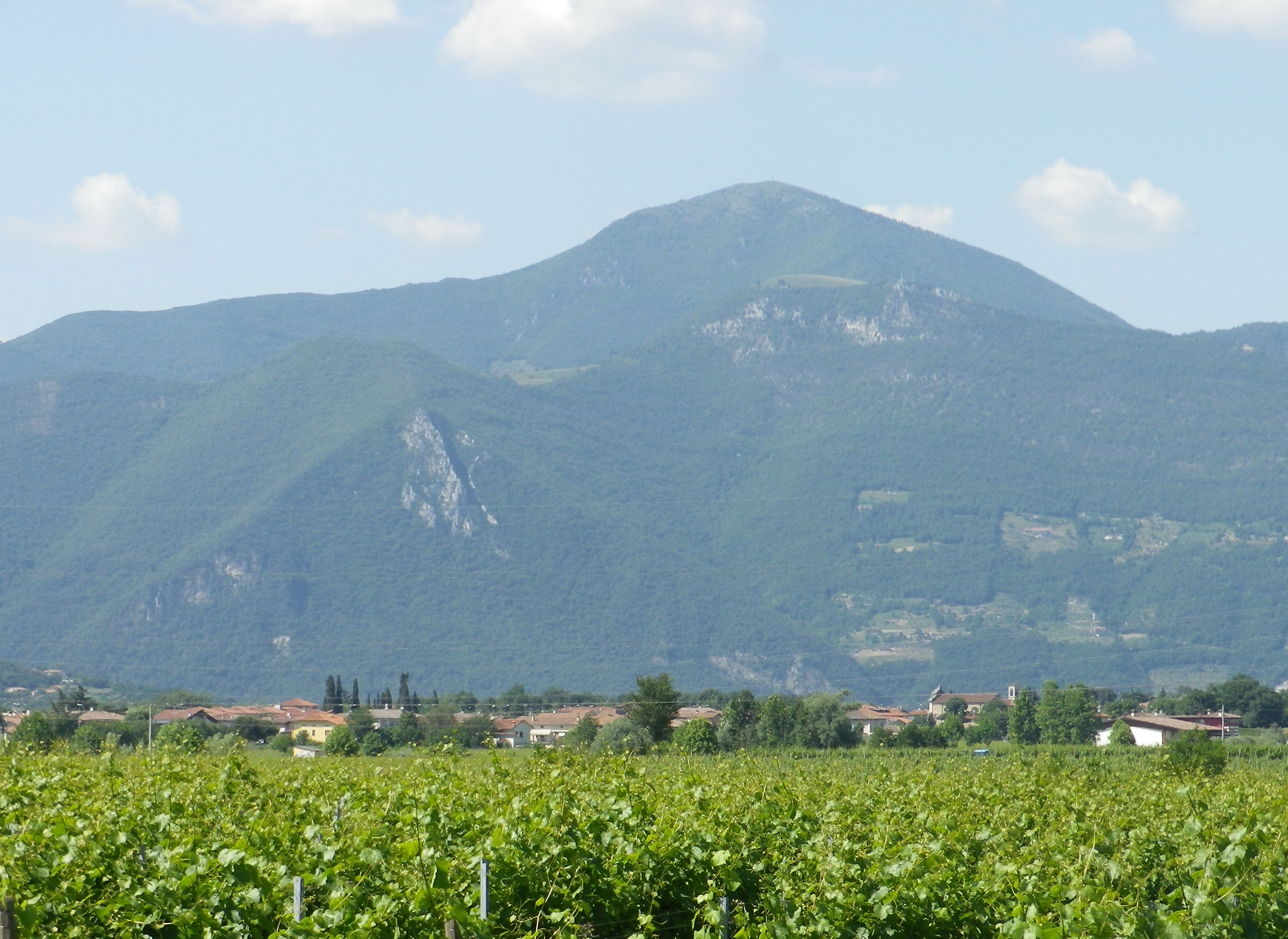
As the trail turns east, it approaches the Itinerario 5/Percorso Rosso (Red) Trail at Calino – an opportunity to lengthen the cycling experience, and to visit the center of Erbusco. But Percorso Giallo heads away from town, and into countryside along a quiet, tree-lined road for a couple of kilometers. At Bettolino, the trail heads north, back toward Lake Iseo, but then detours west to pass through Borgonato, an important wine village in this area. Surrounded by extensive vineyards, Borgonato seems dwarfed by the distant mountains which provide a backdrop for them. Continuing east until Nigoline, the trail then heads north again, reaches the wine town of Timoline, where it turns west. As the trail leaves Timoline, it passes more wineries, to include the modernistic Bersi Serlini. Remember to breathe while pedaling (very slightly uphill) toward Provaglio: The vista of the peaked mountains surrounding three of four sides of Lake Iseo is breath-taking.
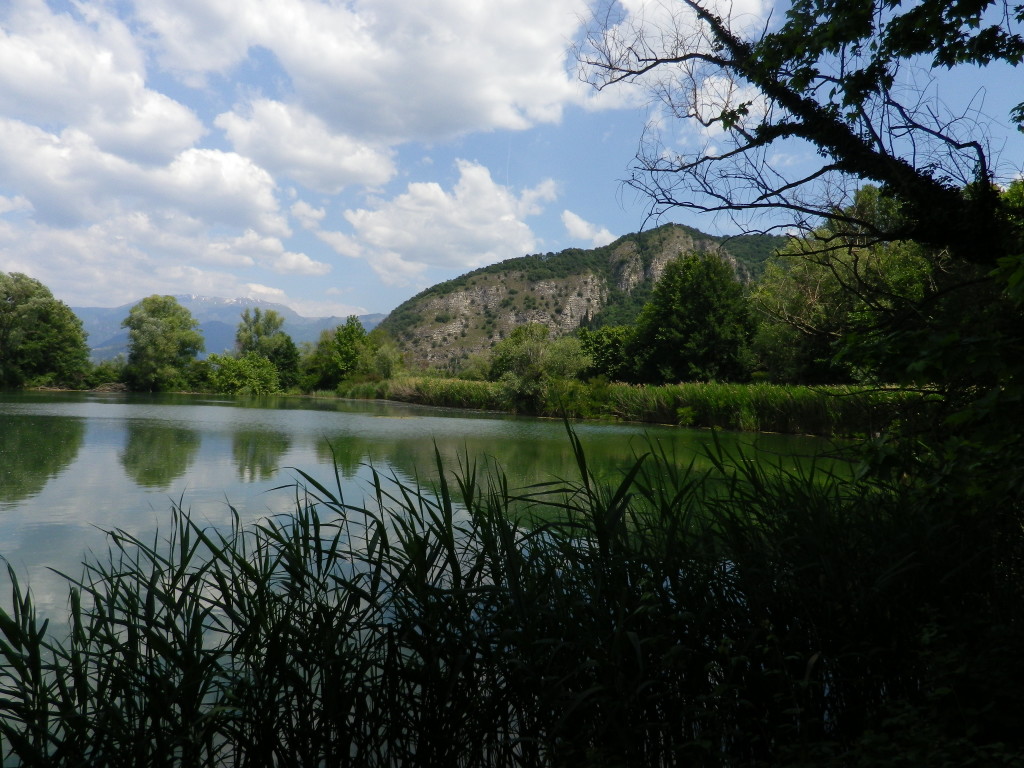
The trail approaches, but does not enter the town center of Provaglio. Rather it turns into one of Provaglio’s two claims to fame: the Torbiere del Sebino (Sebino Peat Bogs), a wonderful natural preserve. With its pristine paths, and flourishing vegetation and fauna reflecting a variety of micro-environments, this is a quiet, mostly shady, paradise for hikers as well. The ponds with raised banks on which cyclists ride and hikers walk is due in part to the work of the monks of the medieval monastery of San Pietro in Lamosa, Provaglio’s other claim to fame. Seen from the bogs, this dramatic bit of Romanesque architecture seems insignificant in comparison to the craggy mountain behind it. Both sites deserve some time, and since these are near the trailhead, it is easy to factor in the time needed for a visit.
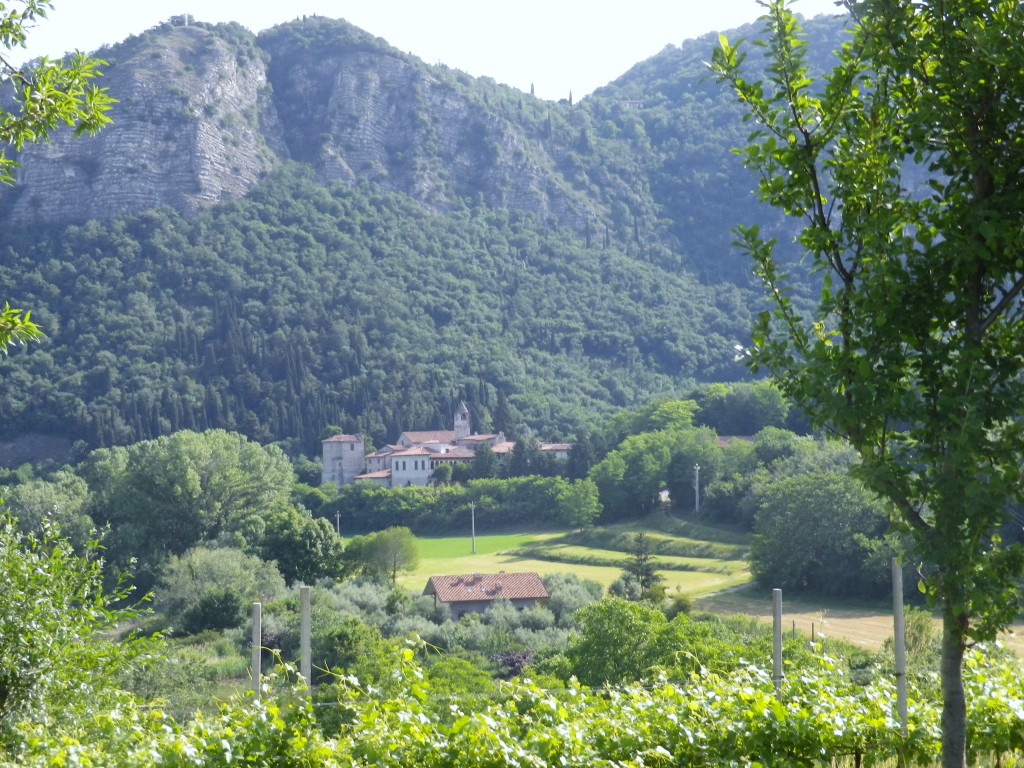
Leaving the bogs, and cycling toward the lake, the trail wound to a close. As I reached SP 12 again, I could go west to the village of Clusane or east to the town of Iseo. I wondered which port to visit for gelato: the port of Clusane, or the port of Iseo. Either way, I had factored in some time for ice cream, and a rest on a bench by the sparkling waters of Lake Iseo.
